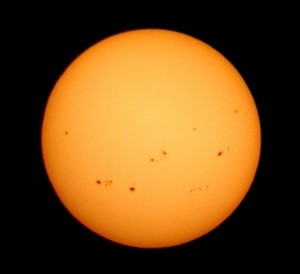Jupiter returns for 2024
October 30th, 2024Daylight savings time is almost gone for the year so Jupiter is back in view during evening skies, coming up in the east around 9:00PM. The DST shift grants even more time for catching the King of Planets. Once it clears the treeline, about 10:00PM or so, you can enjoy Jupiter nestled in the midst of the bright stars of the Winter Hexagon.
If the Galilean Moons are your thing, see if you can pick them up on your binoculars. With a small telescope and a magnification of around 18-30, and a decent dark(ish) sky, you should be able to see the moons and some cloud top features on Jupiter. Galileo himself had recently developed his 30 power telescope by the time he documented these moons for his book, The Starry Messenger.
You can get a useful preview of the moon positions using Sky View Cafe. If you open the tool to the “Moons” tab, you can them adjust your date and time to see where they will appear in relation to Jupiter itself. Depending on the optics you are using, set the Options over in the right marked “North on top” and “Celestial east on left”. Use the Help page and scroll to the Moon/GRS View section for details how to use those two settings.
Especially notable this apparition is the Great Red Spot (GRS) that has been appearing steadily smaller for the last 10 years or so. However, it is not known for sure whether the storm is actually shrinking or this appearance is merely part of an ongoing behavior. The Moons tool above will also show you when the GRS is in view.
Jupiter will be with us in the evening sky through the end of April, plenty of time to explore the moons and features of our largest planet. I hope you will enjoy the show from our biggest and brightest planetary neighbor!
originally published Oct 30, 2024
